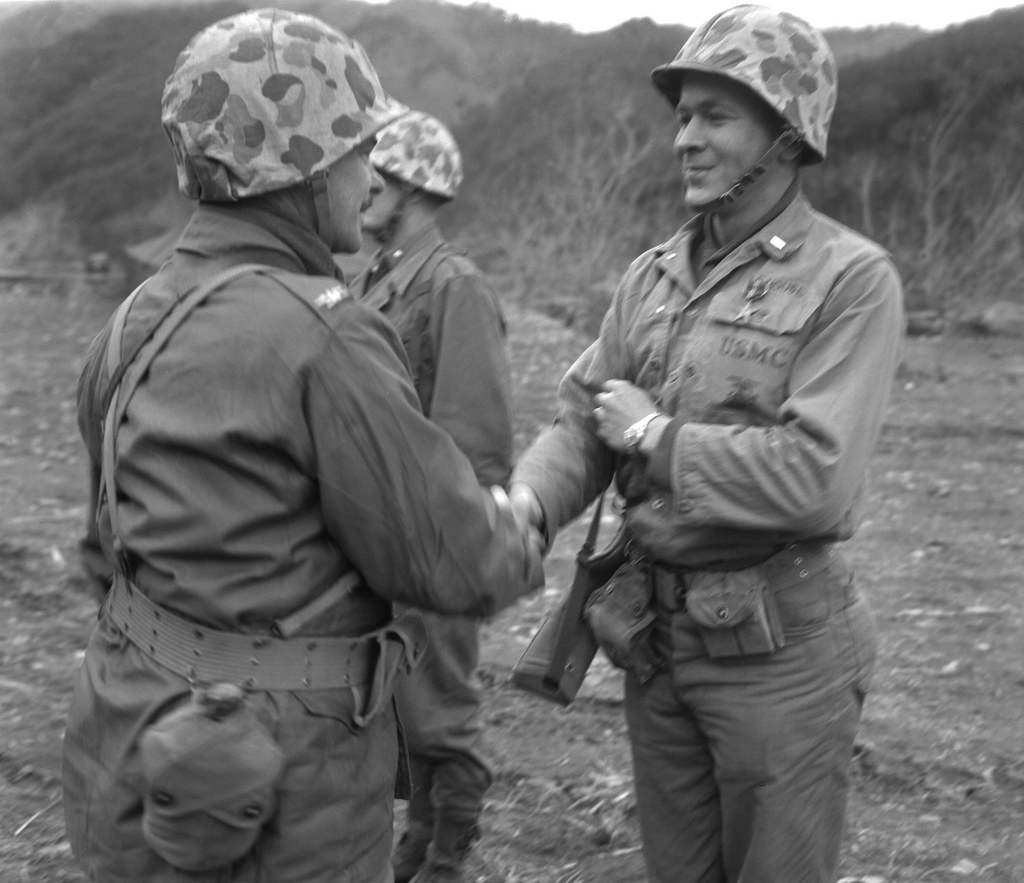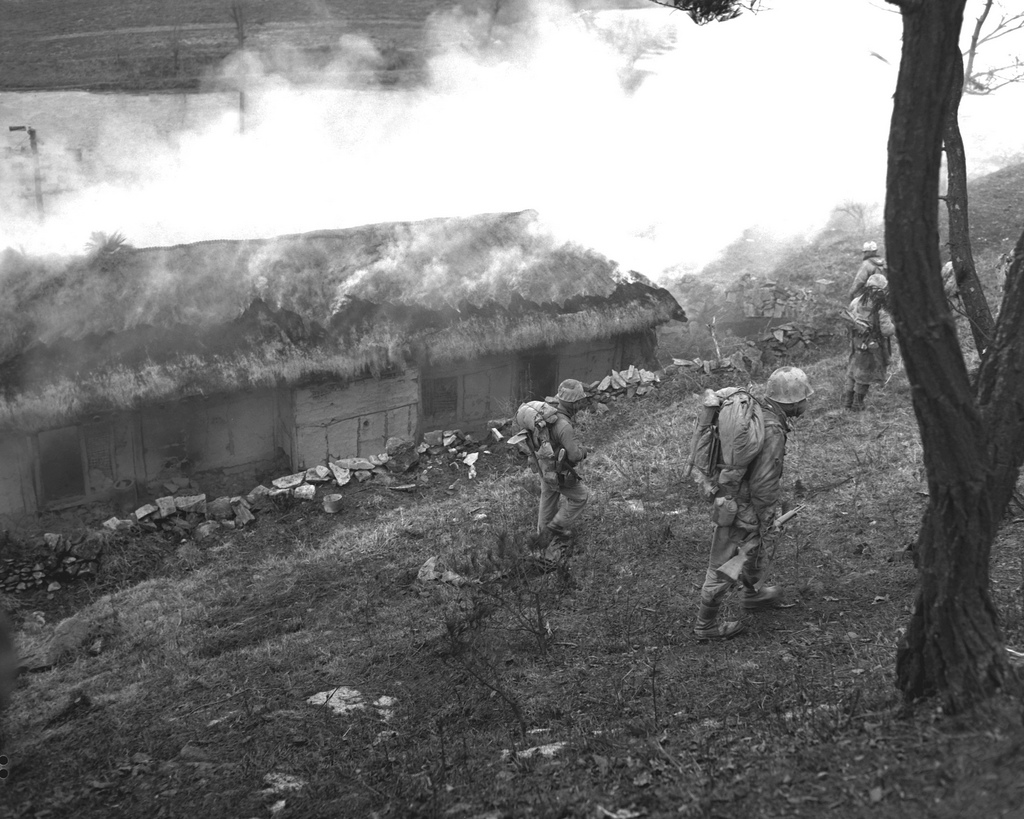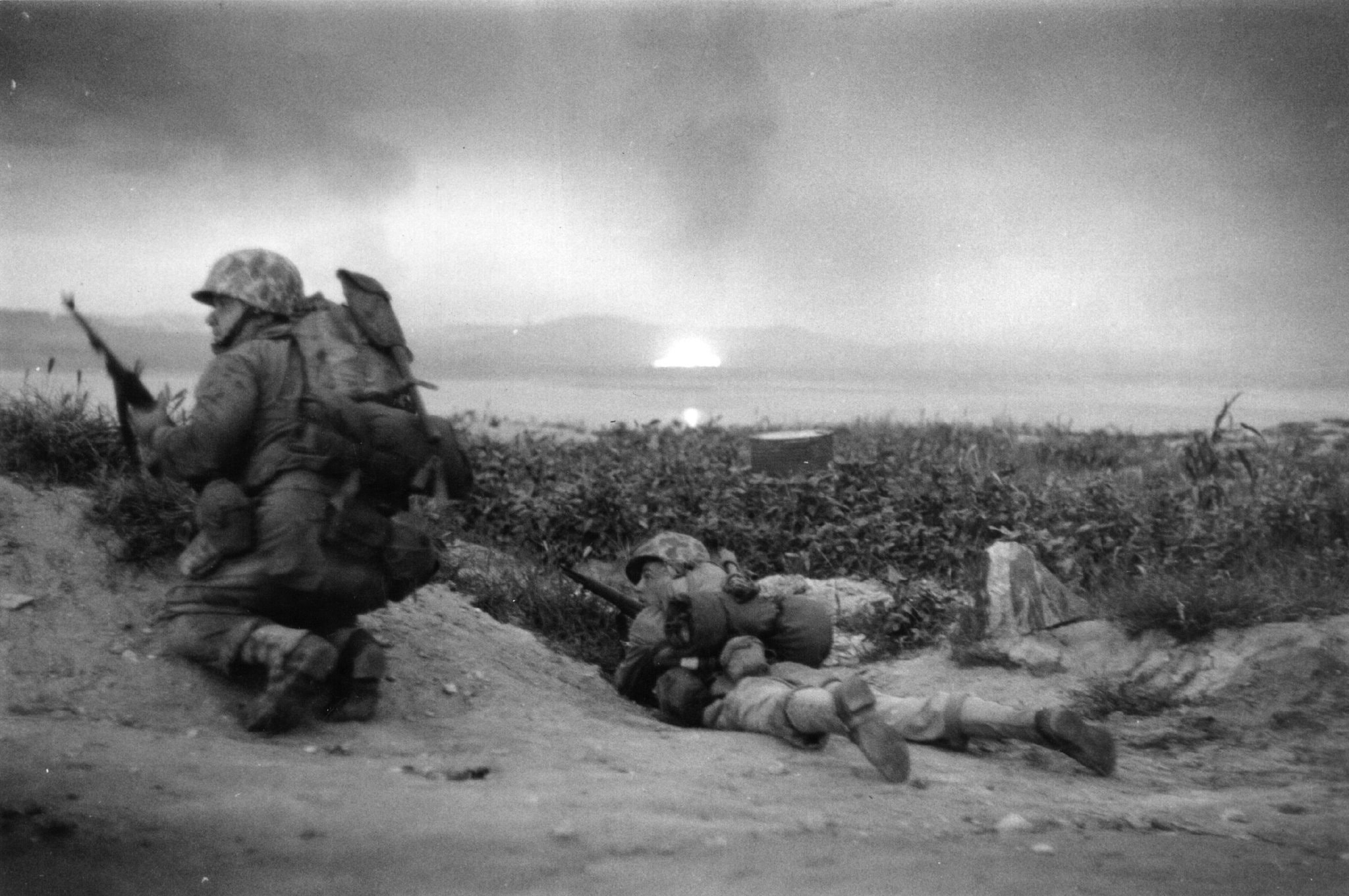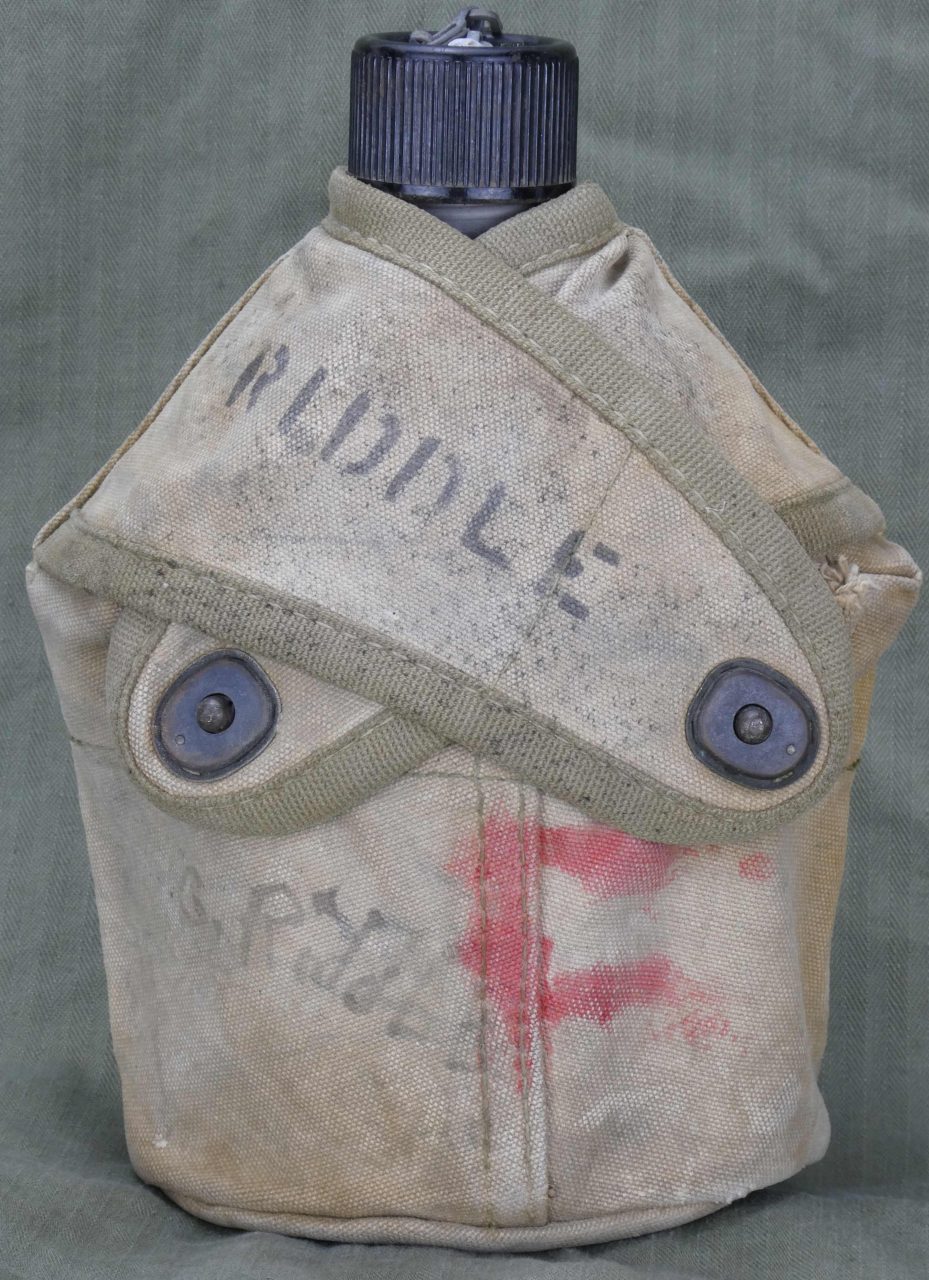The P3 canteen covers were introduced in 1943 from experiences in the Pacific theatre. They are made from cotton canvas like other US webbing of the period, but have long cross flaps to better secure the canteen. The hole at the bottom of some examples was to allow the covers to be used as a funnel to minimize water waste [1]. Some canteens were manufactured without the hole and used that way, though many were modified in the field or at a depot.
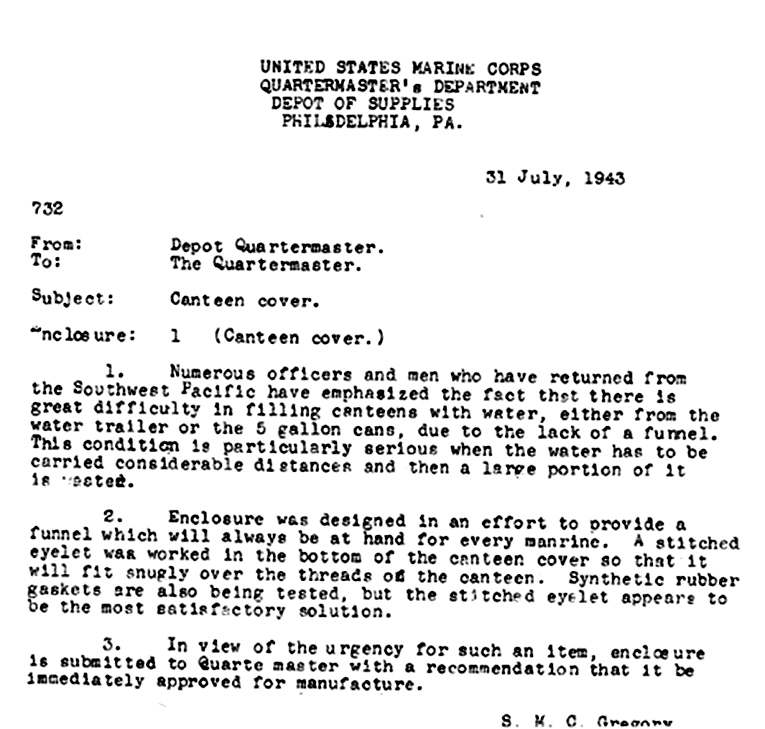
Sample 1: No Drain Hole
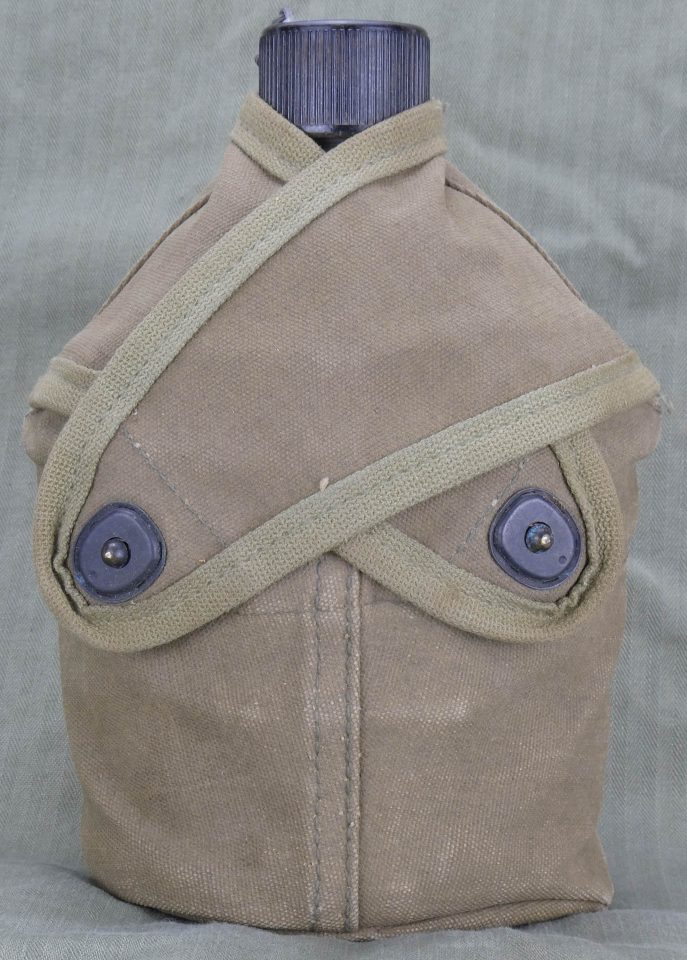
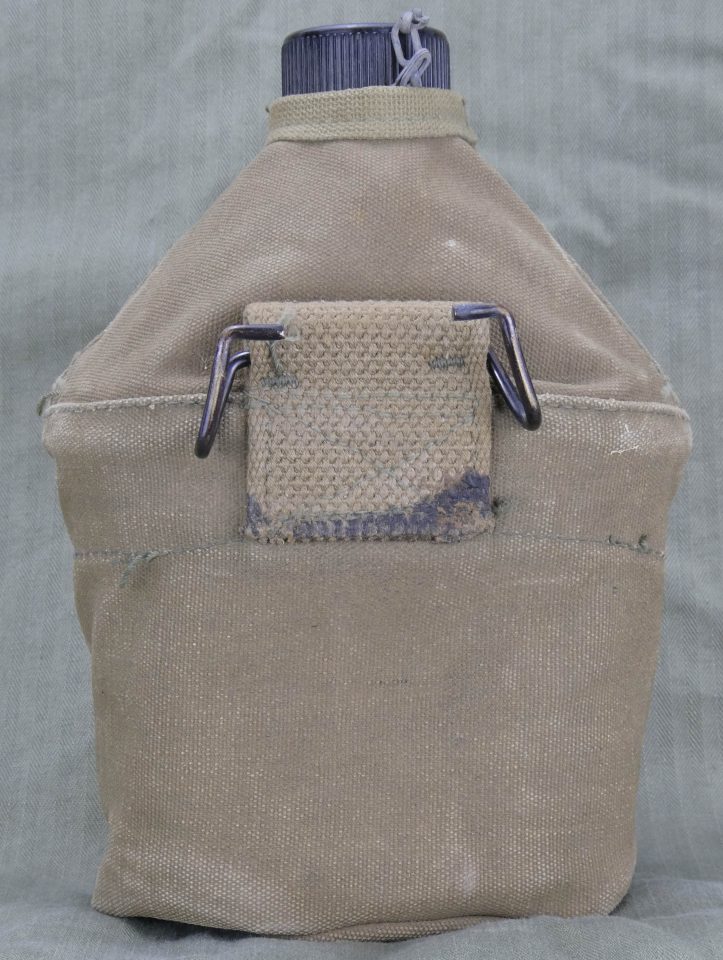
Appears to be entirely unused.
Sides:
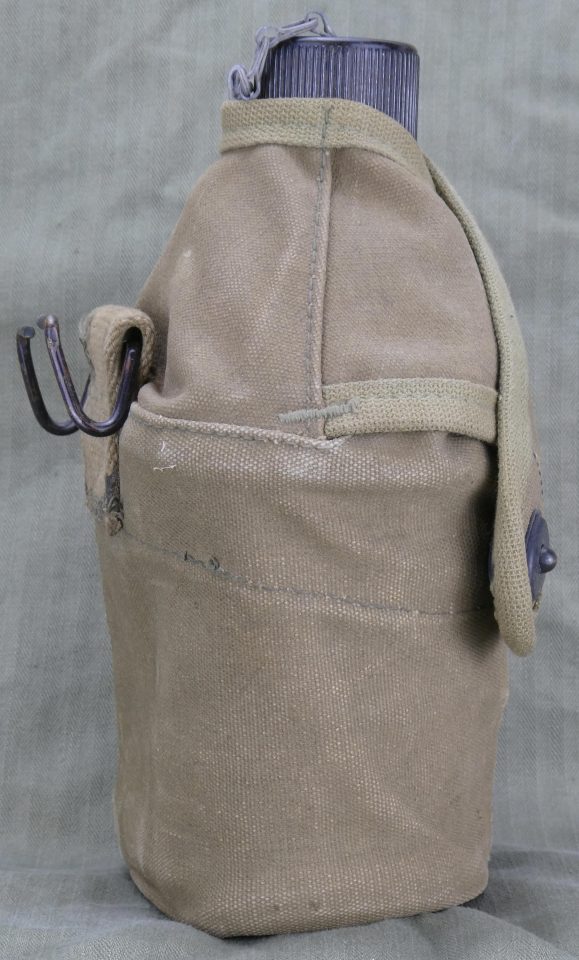
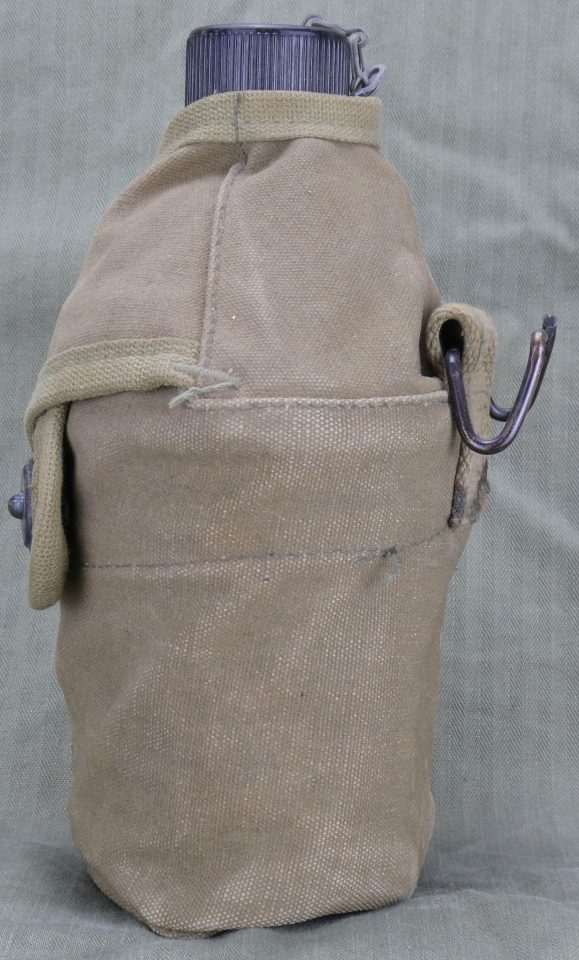
Bottom:
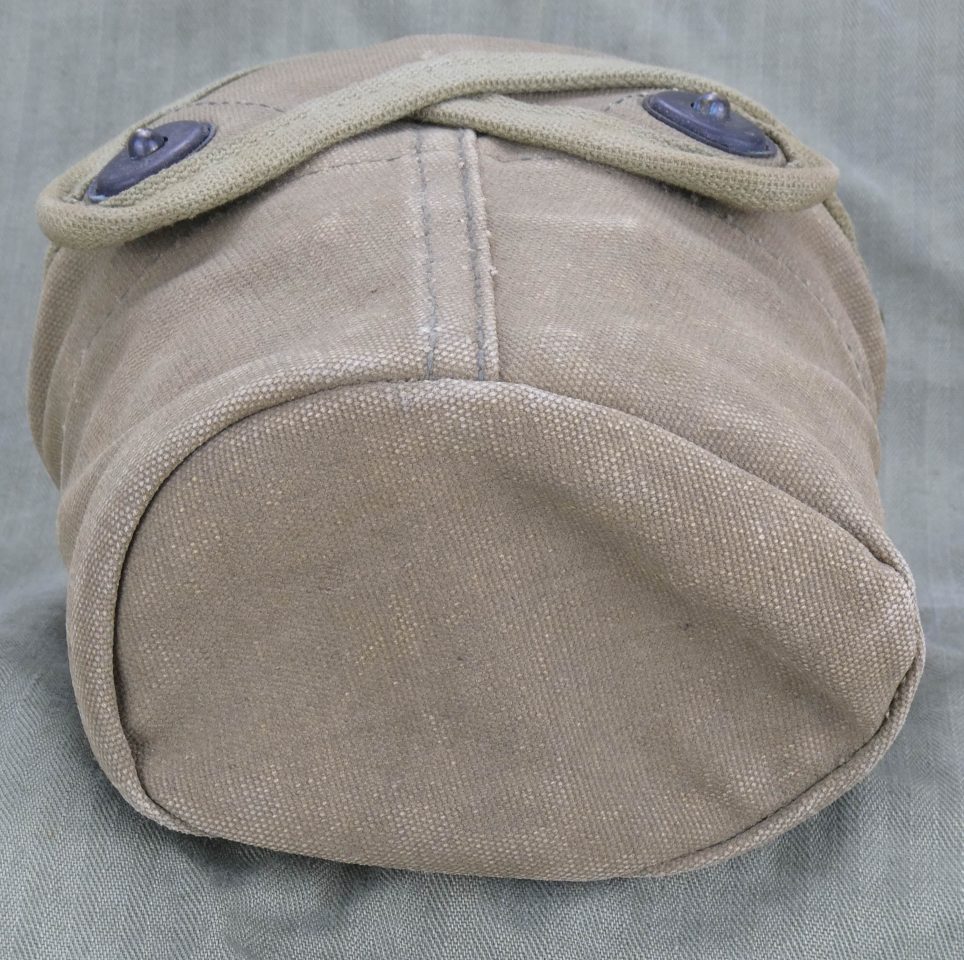
No drain hole.
Top:
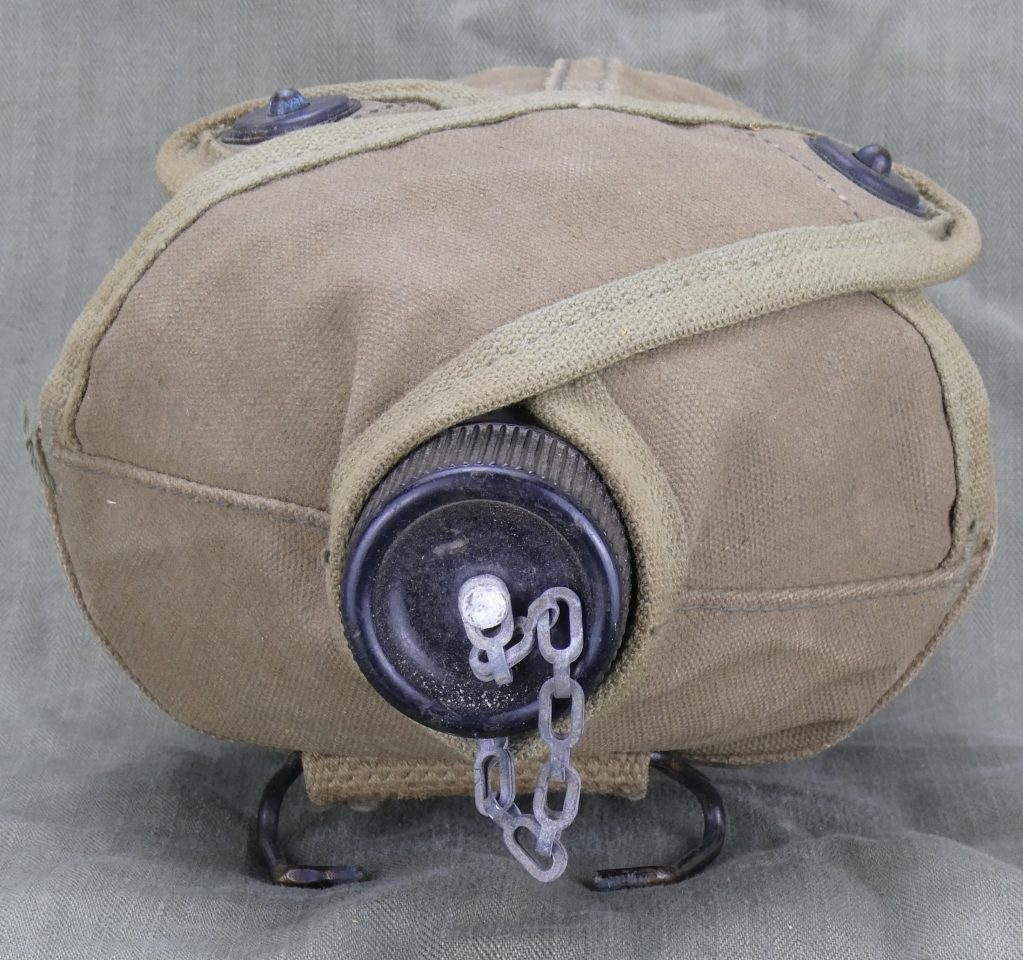
Open Flaps:
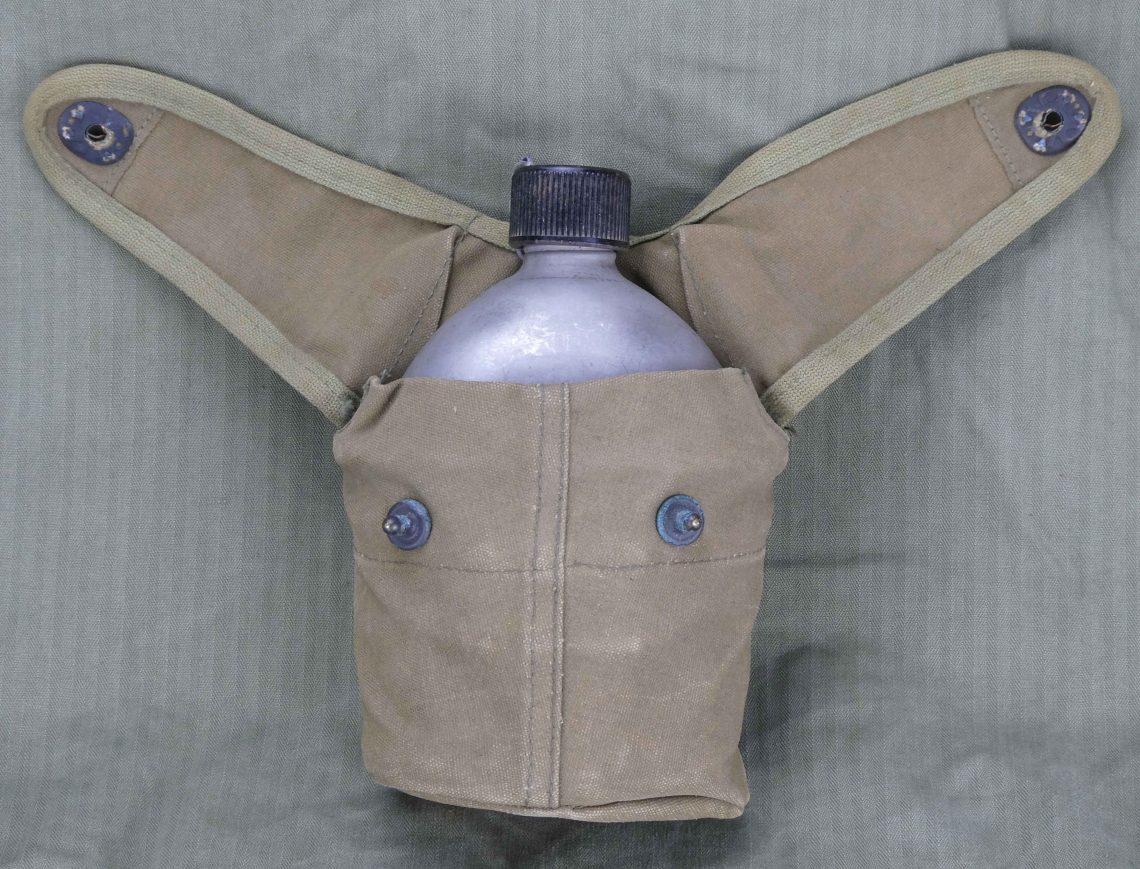
Inside:
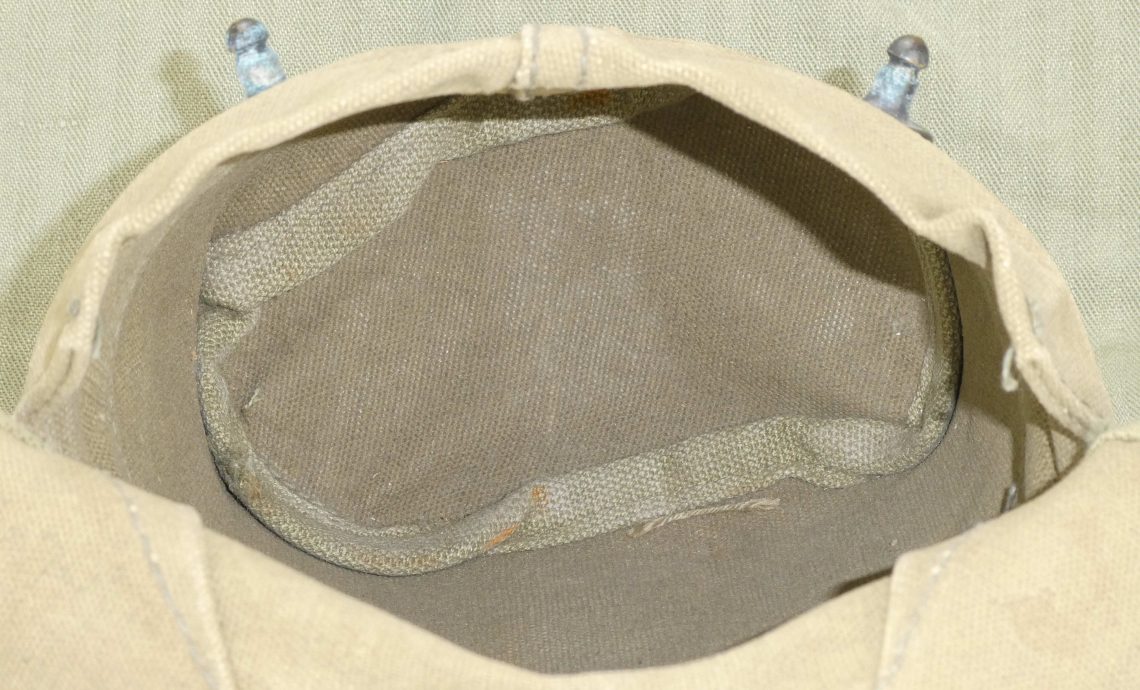
Unlike the Army canteen covers, these were not lined.
Sample 2:
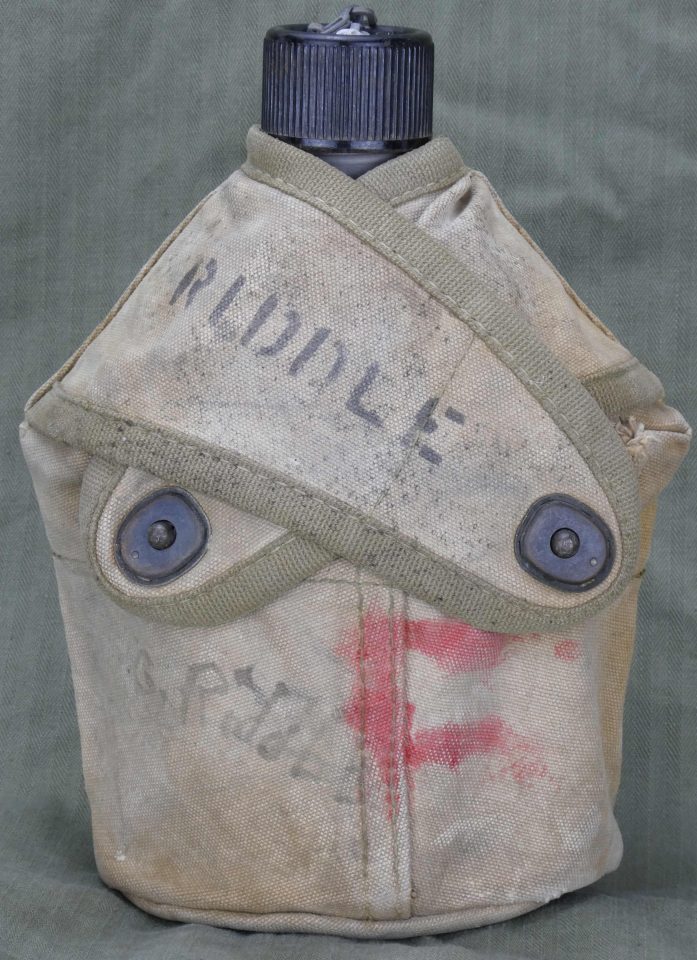
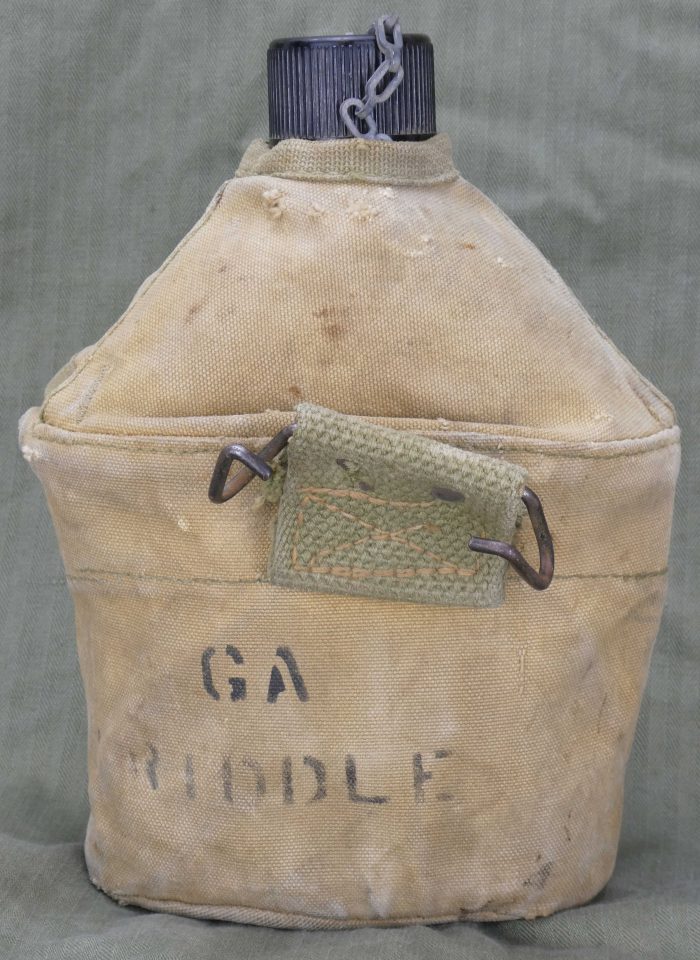
Issued and used. Has drain hole at bottom to be used as a funnel.
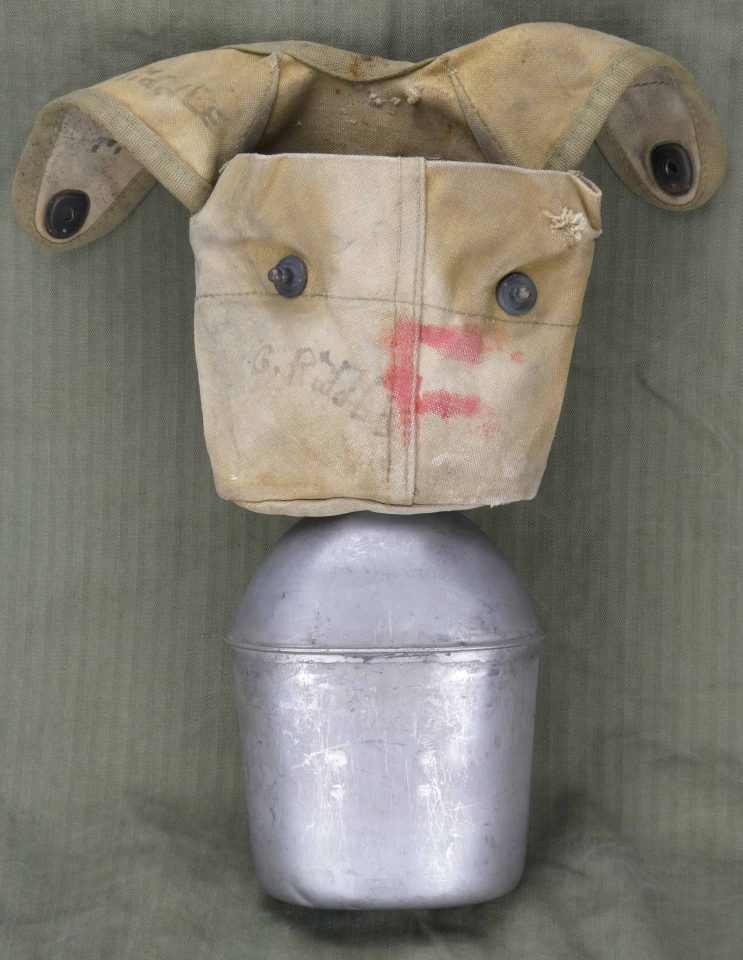
Sides:
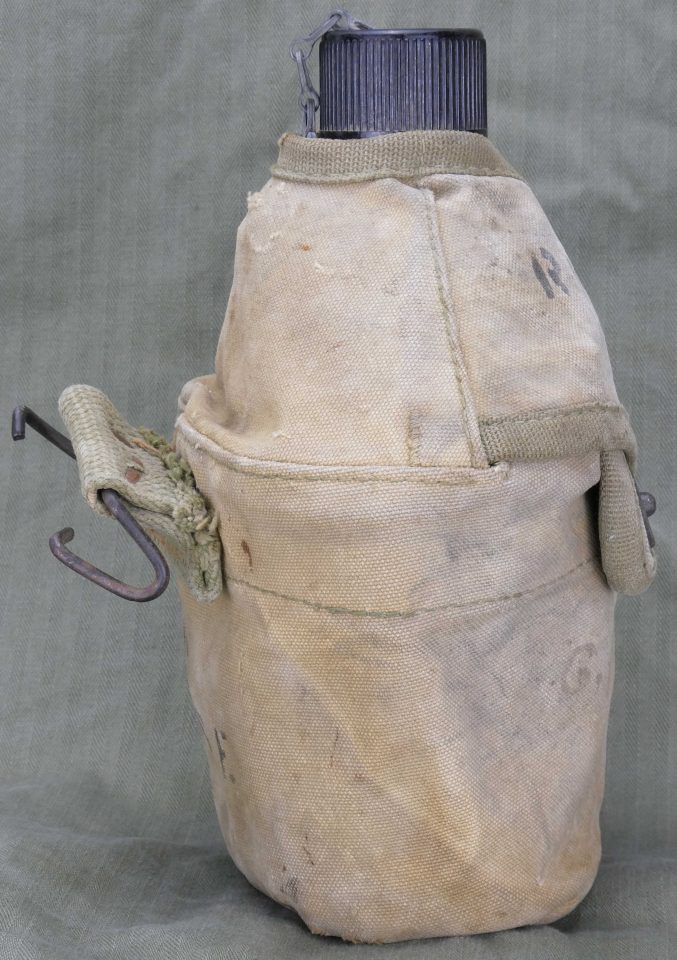
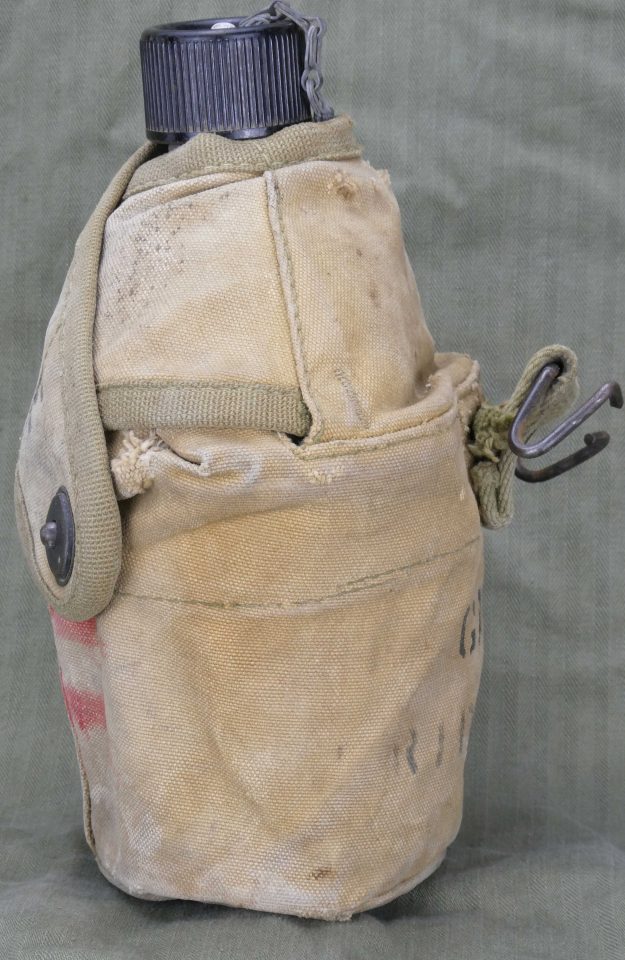
Bottom:
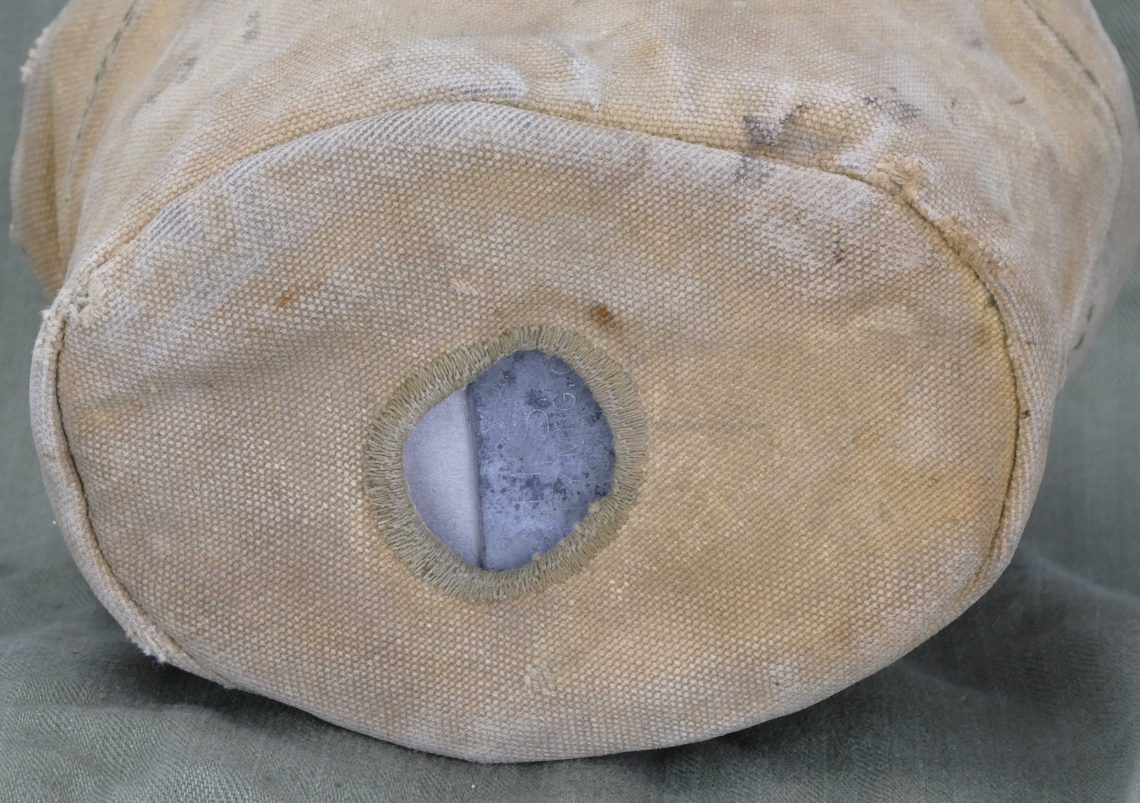
Open Flaps:
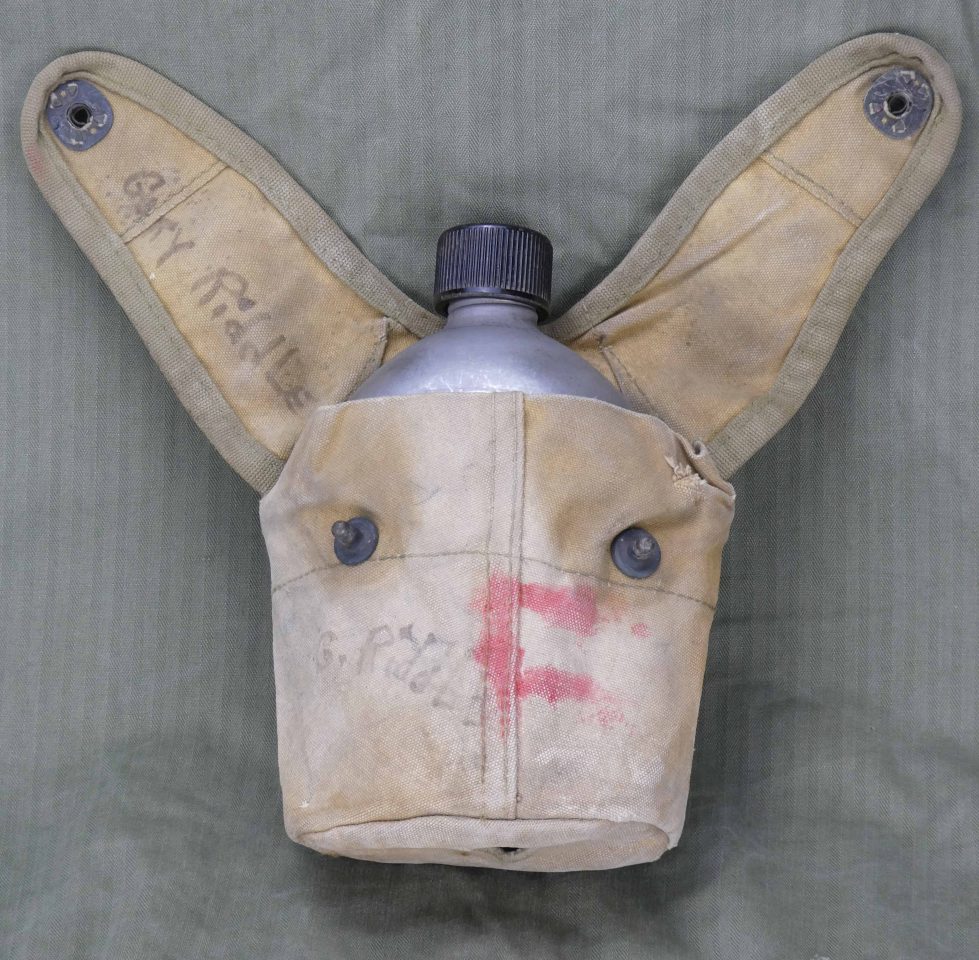
Name written and stamped on outside and under left ear. The red mark’s meaning is unknown as of July 28, 2021.
Inside:
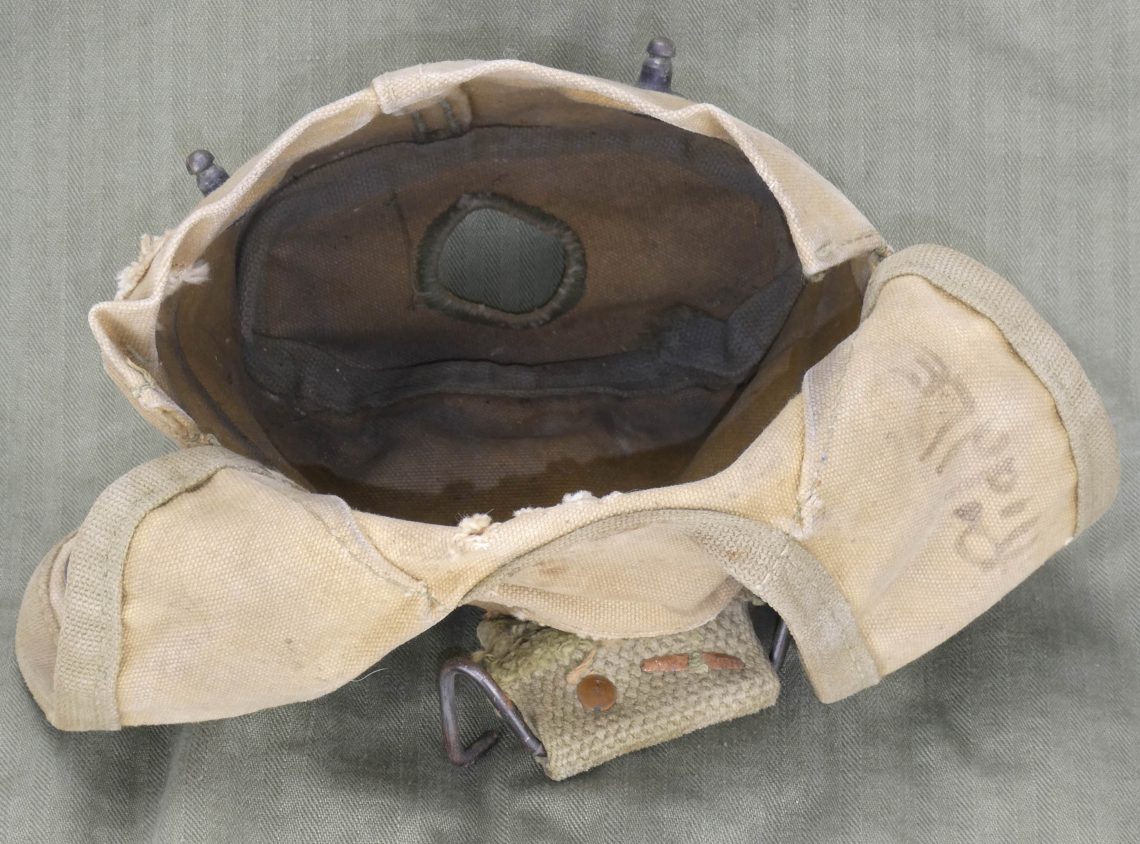
Usage Photos:
P3 canteen covers were used occasionally from 1943 through the end of WW2 (1945) [2] and later in Korea (1950 – 1953) [3][4] (pictures below in Korea section).
Peleliu (September 1944):
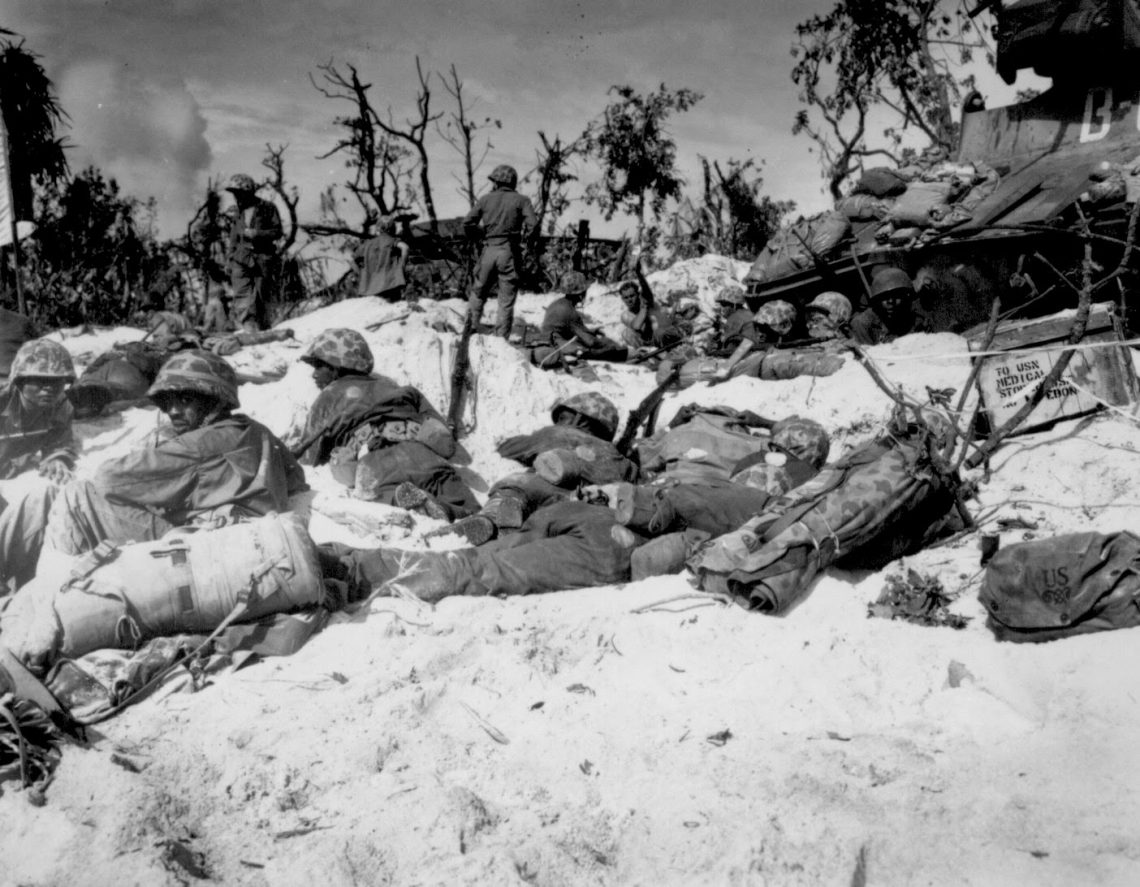

Iwo Jima (February – March 1945):
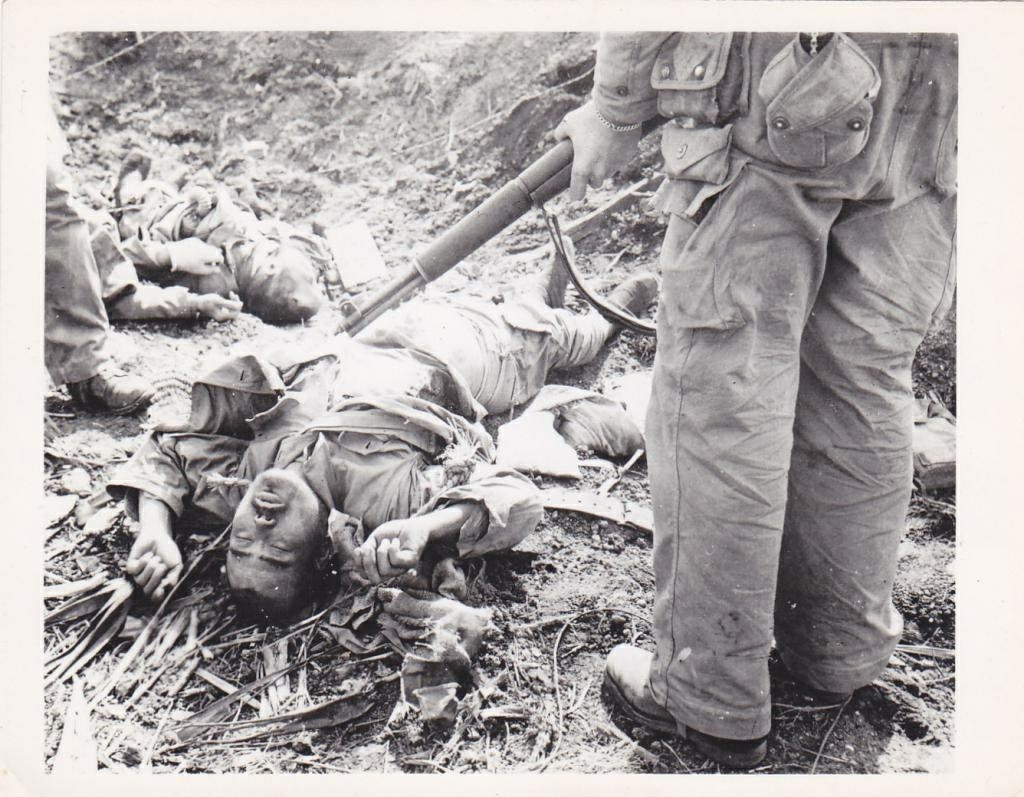
Korean War (June 1950 – July 1953):
